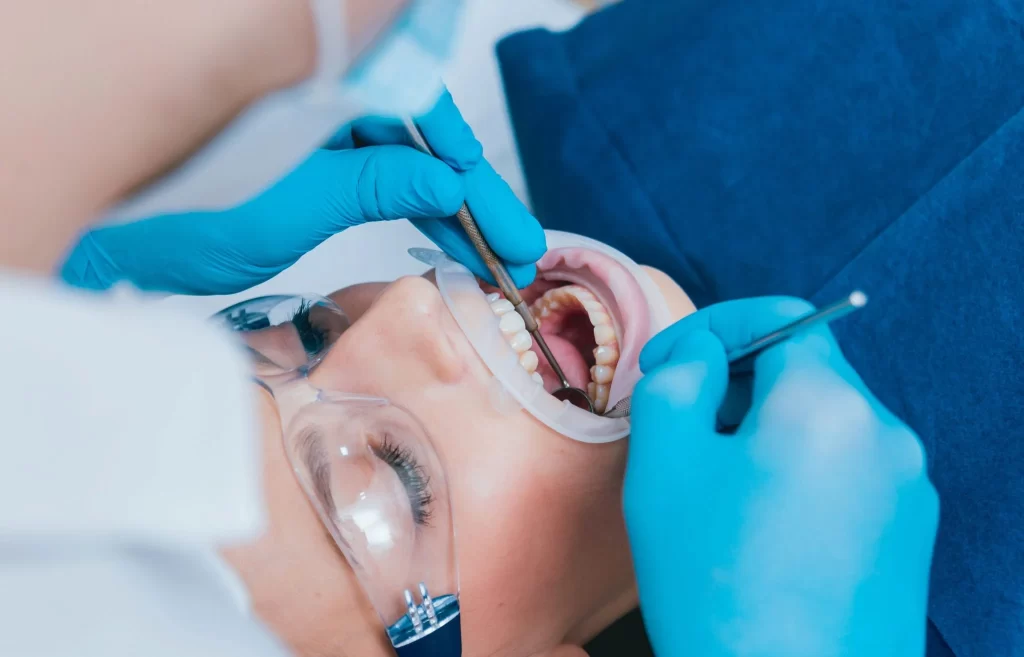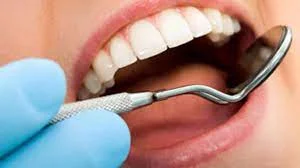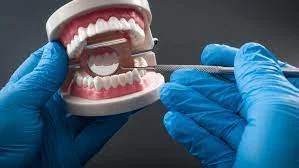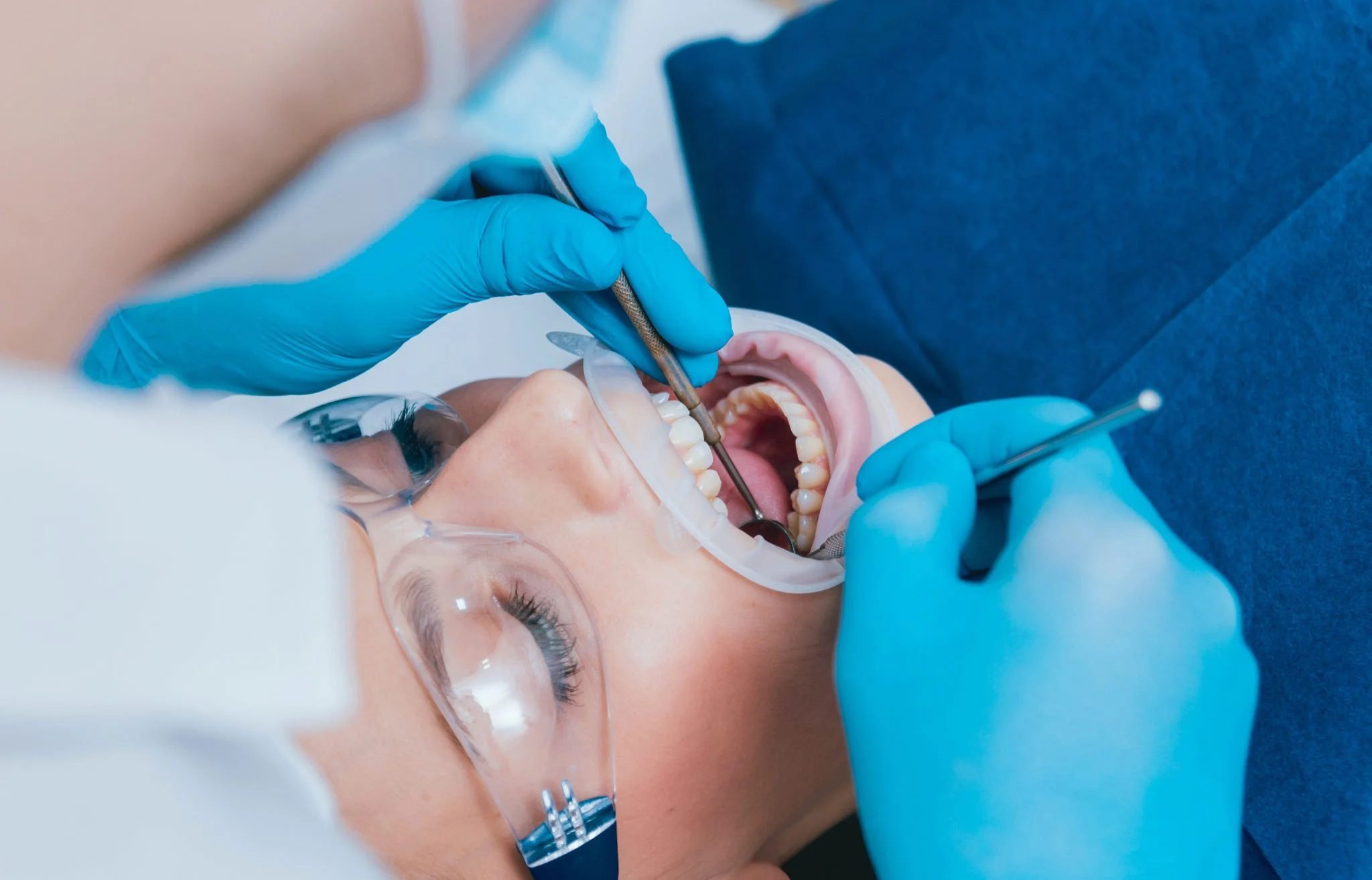What is Oral and Dental Health?

Oral and dental health is extremely important for a person to be physically and spiritually healthy. Regular brushing, flossing and gargling of the individual’s teeth with the encouragement of parents during childhood and by the individual herself during adulthood are the simplest and most effective methods of protecting oral and dental health. Otherwise, oral and dental diseases may occur over time. Although oral and dental diseases are not life-threatening, they lead to consequences that will negatively affect the person’s quality of life. For example, oral and dental diseases can cause speech disorders, digestive problems, bad breath, and an unpleasant appearance, as well as heart diseases. Therefore, the treatment of oral and dental diseases is of great importance for the health of the person. Our doctors, who use advanced technology in oral and dental health and have a quality and patient-oriented approach, provide their patients not only with healthy teeth but also healthy smiles.
Gum Diseases
What are the Causes of Gum Diseases?
The main cause of gum diseases is inadequate oral hygiene. Oral health can be maintained and tartar formation can be minimized by regular brushing 3 times a day. If regular care is not performed, gum diseases may occur due to lack of hygiene. In addition, poor nutrition, genetic predisposition, hormonal changes, stress, and the use of medications such as antidepressants and birth control pills can also cause gum diseases.
What are the symptoms of gum diseases?
The most important symptom of gum diseases is bleeding in the gums while brushing the teeth. This is an indication that the gums are not healthy. So much so that healthy gums do not bleed. Therefore, in such a case, it would be beneficial to see a dentist. In addition, pus leaking from the gums, sensitivity and pain in the gums, redness and swelling, black stains around the gums due to tartar, and bad breath are other symptoms of gum diseases. However, gum diseases can also occur without any symptoms. For this reason, seeing a dentist at regular intervals is extremely important for oral and dental health.
Treatment of Gum Diseases
In the early stage treatment of gum disease, tartar and plaque on the teeth are cleaned, and the patient is given oral hygiene training. Thus, the progression of gum disease is prevented by giving the patient the habit of regular tooth brushing. If the disease is at an advanced stage, surgical intervention may be required. In this case, the aim of the treatment is to ensure a smooth root level and create an easily cleanable gum form by cleaning the tartar and eliminating the gaps that occur. However, in order to maintain these gains achieved through treatment, paying attention to one’s oral and dental health is as important as the treatment.
Implant Treatment
What is a Dental Implant?
Implant treatment is the method applied in cases of single tooth missing, multiple tooth missing or complete edentulism and gives the result closest to the natural tooth. In addition, one of the advantages of the treatment is that healthy teeth are not damaged during the application. With these aspects, the implant is a durable and reliable application. The first stage of implant application is to place the implant into the jawbone where the tooth is missing. The jawbone and the implant fuse between 1 and 3 months following the procedure. Then comes the second stage of the process. In the second stage, prosthetic teeth suitable for your mouth and dental structure are attached to this ossified structure. This process only takes half an hour. After the procedure, the use of the teeth without any problems takes between 3 and 8 months. With the implant method, which does not disrupt a person’s daily life, you can have long-lasting and healthy teeth as well as an aesthetic appearance.
Do Dental Implants Have Any Harm to Health?
The patient must pay attention to implant care and clean her mouth and teeth regularly. Otherwise, bacteria accumulated in the mouth will cause gum disease and this may cause the implant in the jawbone to be lost. Also, in rare cases, the immune system may reject the implant. This situation occurs mostly in individuals who smoke. Again, in individuals who are allergic to titanium (even though titanium is an element compatible with bone and tissue), the implant may need to be removed. Another problem that may occur is yellow nail syndrome. Implant-related yellow nail syndrome can also be prevented by removing the implant. In addition, nerve damage may occur as a result of local anesthesia applied during implant placement. This condition not only causes pain and loss of sensation in the patient, but also causes the patient to have difficulty shaving, eating and speaking. For this reason, being careful in choosing the doctor who will perform the implant treatment and paying attention to oral and dental care after the procedure will have a positive impact on the success of the treatment and will also prevent side effects that may occur as a result of the treatment.
Dental Filling
In what situation should dental filling be applied?
In cases where tooth decay occurs and tooth tissue is lost, it is not possible to recreate tooth tissue through filling. However, filling makes it possible to restore lost tooth tissue. The aim of dental filling is to protect the tooth and provide healing.
What are the Types of Fillers?
There are two commonly used fillers. The first of these is amalgam fillings. Although amalgam filling is a durable and economical filling material, it is not aesthetic because it has a black appearance. For this reason, it is not preferred much. The other filling material is composite filling. Since composite fillings are tooth-colored fillings, they are also known as ‘white fillings’ among the public. Composite filling is the most preferred filling material because it provides an aesthetic appearance. Composite filling is disadvantageous in this respect because it is not as durable as amalgam filling. However, with the development of technology, the content of composite fillings has been strengthened. In this way, the lifespan of the composite filling can reach 10 to 15 years. It should also be noted that since they do not have an aesthetic appearance, it is possible to replace existing amalgam fillings with composite fillings if your doctor deems it appropriate.
Prosthetic Teeth (Dense)
What is a Prosthetic Teeth?
What is a Prosthetic Teeth? In cases where gum diseases cannot be treated or tooth loss occurs as a result of an accident, dentures that have the same function as healthy teeth and have an aesthetic appearance are made. The aim of the prosthesis is to restore lost oral health and make the person feel good psychologically.
What are the Types of Prosthesis?
Prostheses are divided into two basic groups: removable prosthesis and fixed prosthesis. The first type is removable dentures. Removable dentures are used in cases where there is a large number of teeth missing, in cases where there are missing tooth areas that do not end with a tooth, or in cases where the abutment teeth cannot bear the weight. If there are teeth that will serve as abutment in the mouth, partial denture is applied, whereas if there are no teeth left, total denture is applied. The second type is fixed prostheses. Fixed dentures are dentures that remain fixed on the tooth. Fixed dentures offer a more natural and aesthetic appearance than removable dentures. In addition, fixed dentures are more functional in terms of chewing than removable dentures. However, fixed dentures can cause gum disease and bad breath.
Root Canal Treatment
What is Root Canal Treatment?
In case of inflammation of the tissue inside the tooth root, which is popularly called the ‘dental nerve’ and feeds the tooth, the process of removing and cleaning the inflamed tissue and then filling the canal with a filling material is called root canal treatment.
How Many Sessions Does Root Canal Treatment Take to Complete?
Although it is usually completed in a single session, several sessions may be required to completely clear the infection, depending on the condition of the tooth.
Dental Aesthetics
Situations Requiring Dental Aesthetics
Aesthetic correction is possible in cases of broken teeth, gapped teeth, crookedness, discoloration or wear. It is a healthy smile design that is targeted with dental aesthetics. With smile design, the smile is renewed by giving a personalized, healthy and natural appearance.
Smile is also extremely important for a person’s self-confidence. It is often observed that individuals who are dissatisfied with the appearance of their mouth and teeth avoid smiling. Research shows that individuals who are satisfied with their smile are more self-confident and happier in their relationships with other individuals. Therefore, smile design can be done in cases where the individual is uncomfortable with his or her smile.
Smile design is unique to the individual and is determined by evaluating the person’s age, the alignment of their teeth, and the appearance of their gums and lips. In addition, the patient’s wishes and socioeconomic level are also evaluated in smile design. As a result of this evaluation, the dentist corrects the defective image and designs the healthiest smile for the patient, aesthetically appropriate to the patient’s demands.









